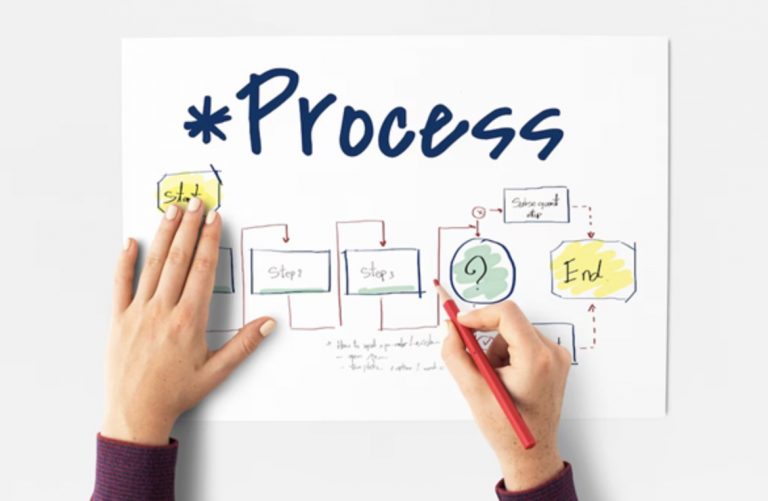Business process diagram shows the sequence of actions in the production of good or service. It helps to analyze, control and improve business processes.
In project management, this visual business process management tool allows you to optimize your workflow, solve organizational problems, save resources, and improve the quality of the resulting product or service.
Understanding Business Process Diagrams
Business process diagrams are used in business process management, software development and systems engineering. Business analysts and subject matter experts use these diagrams to model, analyze, consistently apply, and improve business processes.
Types of Business Process Diagrams
In project management, you can use several types and notations of business process diagrams.
- The flowchart helps to show the conditional logic of decision-making and problem solving processes.
- The swimlane flowchart distributes action blocks into category columns, such as roles, responsible employees, or departments.
- The workflow diagram helps in optimizing the project workflow.
- The business process map helps to improve project management processes.
- The value stream map helps to implement lean manufacturing approaches in project management.
- Manufacturing process flow chart helps in production control and troubleshooting.
- The data flow diagram helps to model project data flows.
Components and Symbols
Advanced diagramming software tools provide users with sets of graphic components and symbols for charting business processes.
For example, see ConceptDraw DIAGRAM software extended with business process solutions.
The Strategic Importance of Business Process Diagrams
The use of business process diagrams provides strategic benefits to the project manager.
Enhancing Communication and Collaboration
The effectiveness of project teamwork and stakeholder management can be significantly improved by modeling, analyzing and optimizing collaboration and communication processes:
- meetings and brainstorms
- communication channels
- document exchange
- information and knowledge management
- decision making and problem solving
- on-boarding newbies
- information security.
Streamlining Project Management Processes
Business process diagrams can help to streamline project management processes by modeling, analyzing and improving:
- project workflow
- agile management implementing
- change and risk management scenarios
- task assigning and reporting
- project progress control
- performance monitoring
- quality management and lean manufacturing practices
- issue tracking.
Practical Applications in Project Management
Business process diagrams are used in project management at all stages of project life cycle as:
- project planning tools
- project workflow management tools
- production quality management and process improvement tools
- progress monitoring tools
- team and stakeholders communication management tools
- decision making and problem solving tools
- change and risk management tools.
Creating Effective Business Process Diagrams
Before you start drawing your business process diagram, you need to collect information about your business process.
- Define the goal at the start and the outcome at the end of your business process.
- List the main steps in your business process. Also list the subprocesses.
- Make a list of employees and departments involved in your business process at each step.
- Define rules and conditions for transition from step to step of your business process.
- Choose software tools for business process diagramming. Identify the employees who will work with this application.
Design your business process map:
- Outline steps of your business process. For this purpose you can use mind map software. Then draw the draft flowchart.
- Collect information about your process, and complete your draft flowchart.
- Get feedback from people involved in your process, and refine your draft flowchart. A brainstorming tool may help at this stage.
- Draw your business process map using the diagramming tool with appropriate symbol sets.
- Assign responsible employees for each step of your business process.
- Set up rules and conditions for transitions from step to step and at branching points in your workflow.
- Test and implement your business process with your team.
- Update your business process map regularly to continuously improve your business processes.
The Future of Diagrams in Project Management
It is obvious that in the future, business process diagrams will become indispensable tools for visual project management at all stages of the project life cycle.
In conclusion
Incorporate business process management approaches into your project management practices to improve workflow, resource utilization, and product quality. Enhance your project planning tools with business process diagrams to ease your path to project success.

0 Comments